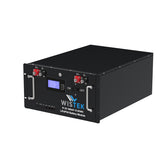How to Estimate Solar Energy Production Based on Your Location
If you're considering going solar, one of the most important steps is learning how to estimate the solar energy you can expect based on where you live. The amount of electricity your solar panels can produce depends on several local factors—sunlight hours, weather, panel angle, and more. Being able to estimate solar energy production accurately empowers homeowners, solar professionals, and off-grid enthusiasts to make informed decisions about sizing systems, calculating ROI, and reducing energy costs.
In this comprehensive guide, we’ll show you exactly how to estimate your solar energy potential by understanding and applying key concepts to your location and system setup.
- Why You Need to Estimate Solar Energy Production Accurately
- Factors That Affect Your Solar Energy Estimate
- Tools and Methods to Estimate Solar Energy Production
- Estimating Solar Production for Grid-Tied vs Off-Grid Systems
- How Location Affects Your Solar Estimate
- How to Estimate Solar Energy Needs Based on Your Usage
- Advanced Methods to Improve Your Solar Estimate
- Mobile Apps and Smart Tools That Help You Estimate
- Common Mistakes People Make When Trying to Estimate Solar Production
- Enhancing Your Estimate With Professional Help
- Using Your Estimate to Calculate ROI and Payback Period
- Estimate Before You Install and Reap the Rewards of Going Solar
Why You Need to Estimate Solar Energy Production Accurately
Making Smart Investment Decisions
When you're about to invest thousands of dollars into a solar system, the ability to estimate your solar energy output accurately determines whether you’ll get a good return on investment. Overestimating could lead to underperformance and disappointment, while underestimating might prevent you from realizing the full benefits of solar energy.
System Sizing Depends on the Right Estimate
Without the correct estimate, your solar array might end up too small to power your needs—or unnecessarily large, wasting money and space. An accurate energy estimate is the foundation for sizing your battery bank, inverter, and backup systems, especially in off-grid environments.
Factors That Affect Your Solar Energy Estimate
Solar Irradiance in Your Region
The primary factor in your estimate is solar irradiance—how much sunlight reaches your panels daily. It’s measured in peak sun hours, not daylight hours. For instance, New Mexico may receive 6.5 peak sun hours per day, while Seattle may get just 3.5.
Roof Orientation and Tilt Angle
Your roof’s angle and direction play a major role in the estimate. South-facing roofs in the northern hemisphere receive the most sunlight. Panels tilted to match your latitude tend to yield optimal results, but this angle can be adjusted seasonally for better year-round output.
Weather and Seasonal Variation
Overcast days, snow, dust, and smog can all impact your estimate. Cloudy regions have less consistent output, requiring a buffer in system design. Some areas also experience significant variation between summer and winter output, affecting your annual production estimate.
>>See also How to Know How Much Power Your Device Uses
Tools and Methods to Estimate Solar Energy Production
Online Solar Calculators
Several free tools allow you to estimate solar energy by simply inputting your location and system size:
PVWatts Calculator (by NREL)
Global Solar Atlas
Google Project Sunroof
These tools consider solar irradiance data, local weather, and panel efficiency to give you a monthly and yearly estimate.
Using PVWatts to Estimate Output
Let’s walk through how to use PVWatts:
Go to the PVWatts website
Enter your location (city or ZIP code)
Choose system size (e.g., 5 kW)
Input tilt angle and azimuth (direction)
Review the output in kWh per month/year
This gives you a strong estimate of how much solar energy you can expect annually.
Manual Estimate Using Peak Sun Hours
A simplified formula to estimate energy production:
System Size (kW) × Peak Sun Hours × 30 = Monthly kWh Estimate
For example, a 5kW system in a location with 5 sun hours:
5 × 5 × 30 = 750 kWh/month
Adjusting for efficiency losses (typically 10–20%) gives a more realistic estimate.
Estimating Solar Production for Grid-Tied vs Off-Grid Systems
Grid-Tied Systems
For grid-tied setups, your goal is to offset your electric bill. Your estimate should cover your average monthly usage. If you use 900 kWh/month, and you get 5 peak sun hours/day, a 6–7kW system is a good starting estimate.
Off-Grid Systems
Off-grid users must estimate daily and seasonal demand very precisely to avoid shortages. Add energy buffers for cloudy days and winter months. Battery bank size must reflect both your estimate and autonomy requirements (e.g., 3–5 days without sun).
How Location Affects Your Solar Estimate
Comparing Regions
|
City |
Peak Sun Hours |
Monthly kWh from 5kW |
|
Phoenix, AZ |
6.5 |
975 kWh |
|
Miami, FL |
5.2 |
780 kWh |
|
Chicago, IL |
4.2 |
630 kWh |
|
Portland, OR |
3.7 |
555 kWh |
This table shows how dramatically your estimate can shift based on geography. A homeowner in Phoenix can expect nearly double the production of someone in Portland from the same solar system.
How to Estimate Solar Energy Needs Based on Your Usage
Check Your Electric Bill
Start by reviewing the past 12 months of utility bills to find your average usage. If you use 1,000 kWh/month, you need a system that matches that production level in your estimate.
Consider Efficiency Upgrades
Lowering your energy needs through better insulation, LED lighting, and efficient appliances can reduce your required solar production estimate—and system cost.
Advanced Methods to Improve Your Solar Estimate
Incorporating System Losses
Typical losses include:
Inverter inefficiency (5–8%)
Wiring losses (1–3%)
Dirt/snow shading (up to 10%)
Factor these into your estimate by multiplying by a performance ratio (~0.8–0.9).
Year-Round Weather Data
Use local meteorological data for a more refined estimate. Seasonal charts from NREL or PVGIS help simulate production variation throughout the year.
Mobile Apps and Smart Tools That Help You Estimate
Solar Estimator Apps
Apps like SolCast, Sunseeker, and SolarEdge’s Designer allow you to generate on-site solar estimates using your phone’s GPS and compass.
Satellite and Drone Imaging
Some services use satellite or drone imagery to analyze your roof's surface area, shade, and orientation, then return a complete solar potential estimate with installation suggestions.
Common Mistakes People Make When Trying to Estimate Solar Production
Ignoring Shading Effects
Even partial shade from trees or chimneys can reduce production by 20% or more. Your estimate must include any shade analysis—especially for fixed-tilt arrays.
Using Only Summer Data
Many people estimate solar output based on summer conditions, only to be surprised by poor winter performance. Always use full-year averages to get a realistic estimate.
Assuming 100% Panel Efficiency
No panel is 100% efficient. Standard panels have about 18–21% efficiency. Your estimate must reflect real-world conditions, not lab specs.
>>See also How to Determine the Minimum Charging Current for a 200Ah Battery
Enhancing Your Estimate With Professional Help
Hire a Solar Consultant or Installer
Experienced professionals can provide site-specific solar estimates using professional-grade modeling software like Helioscope or Aurora Solar. These reports include shading analysis, degradation over time, and financial ROI projections.
Get Multiple Estimates Before You Install
Always collect at least 3–5 quotes with their corresponding energy estimates to compare vendors and design options. Look at both production numbers and warranty/support quality.
Using Your Estimate to Calculate ROI and Payback Period
Simple Payback Calculation
Divide your upfront system cost by the annual savings from your estimate. If your 5kW system costs $10,000 and saves $1,200/year:
$10,000 / $1,200 = 8.3 years
This estimate helps you decide if solar is financially viable.
Consider Tax Credits and Incentives
Incentives like the U.S. federal solar tax credit (ITC) can significantly reduce payback time. Factor them into your overall ROI estimate for accurate results.
Estimate Before You Install and Reap the Rewards of Going Solar
In the last 100 words, it's vital to remember: your solar journey should always begin with a realistic and well-informed estimate. Knowing how to estimate solar energy production based on your location will help you size your system properly, avoid financial mistakes, and design a setup that meets your energy goals. Whether you’re off-grid or grid-connected, tools and methods are readily available to assist in your solar estimate. Use this knowledge to make confident, cost-effective, and sustainable energy decisions.
























Leave a comment
All blog comments are checked prior to publishing